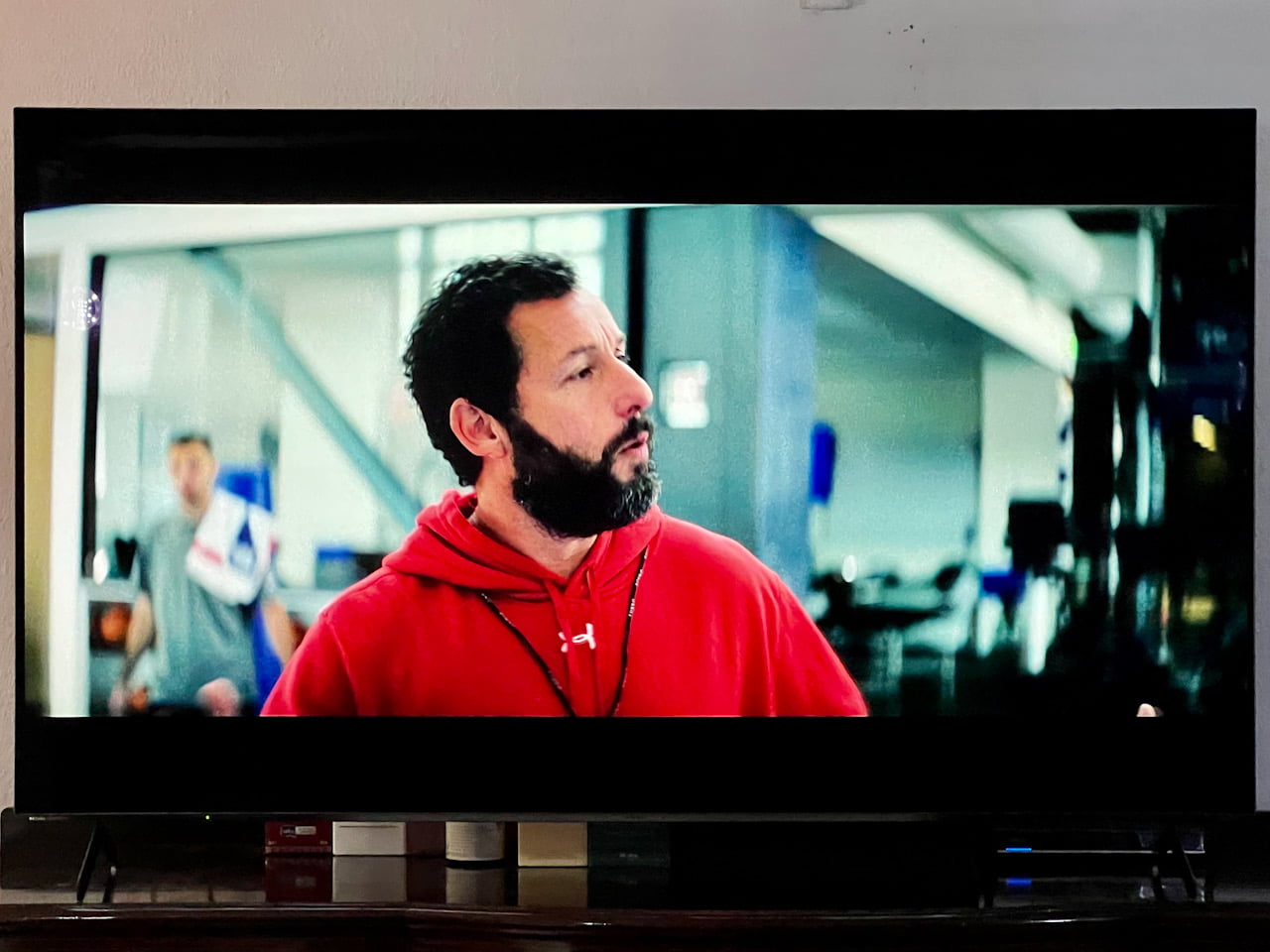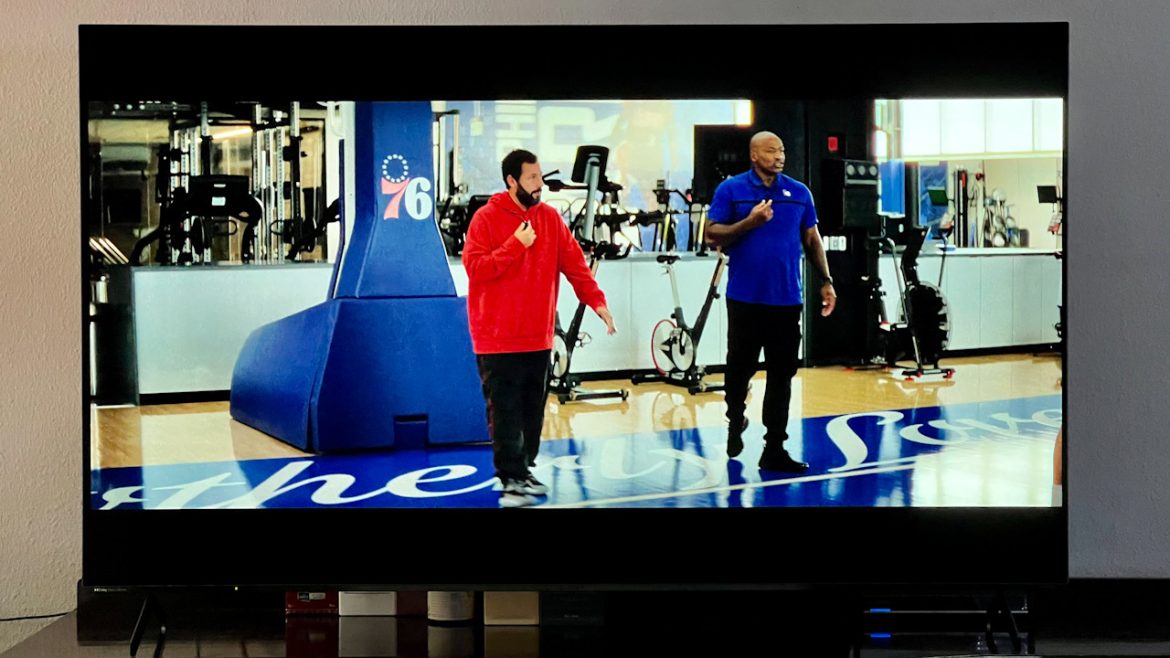The last time we reviewed a PRISM+ TV, we were singing the praises of taking an austere approach to buying a flat-screen TV. Now, PRISM+ is applying the same marketing blueprint for its new range of OLED TVs. OLED is premium tech, so is it enough for PRISM+ to essentially apply the same strategy for this category?
The PRISM+ 55AL and 65AL (let’s refer to them collectively as 55/65AL) aren’t fancy by measure – design-wise, it is pretty sparse as TVs go, but that’s not necessarily a downside. It’s all about thin bezels and a slim frame anyway, which the 55/65AL wisely adopted. Thin lines that envelop a large, vibrant screen; what’s not to like? The content on display gets all our attention, as it should be, save for a little indicator light at the bottom left of the TV.

The TV itself is pretty svelte, with only a protrusion at the rear, nestling a space measuring about a third of the screen area to accommodate the electronics. Mounting the 55/65AL on the wall will result in a gap on the back, which may or may not be visually appealing. Having said that, I do find that the 55/65AL looks better on a table.
In many ways, this review reads a lot like our review for the Q65-QE Pro . Navigating the 55/65AL feels almost identical; it’s not speedy but neither is it slow. Bootup speed could be slightly quicker but it’s not unbearable. With Android TV as its operating system, navigation is comfortingly familiar, especially the settings menu. Somehow it all feels rather intuitive, and that’s great.
The upside of having Android at its core is that the OS supports most of the usual streaming apps (e.g. Disney+, Netflix, YouTube, Prime Video, Spotify, iQIYI, HBO GO, Viu). So it’s highly unlikely you’ll run into any problems in getting content. The 55/65AL comes with free subscriptions for MeWatch (one year), Viu (three months) and iQiyi (three months), making it the perfect ‘self-contained’ entertainment unit for elderly folk. Chromecast comes built-in as well, so there’s the added convenience and flexibility for sharing content if you have an Android phone.
The experience shuffling from one feature to another has been reasonable. Starting up apps isn’t lightning quick but it doesn’t leave you hanging and I can see myself living with this day in, day out. The 55/65AL has 32 GB of space built-in so there’s room to store a modest number of apps aside from the usual streaming apps. However, you will need an external drive (or thumbdrive, even) to use the time-shifting feature.

Out of the box, the 55AL and 65AL struck me with how bright the display was until I realised the brightness settings were maxed out by default. For a moment, I was worried that lowering the brightness will turn the visuals into a blotchy mess but thankfully this wasn’t the case. I liked having the brightness at the 60 per cent mark but then I soon realised that most of the stuff that I watch tends to be dark and gloomy – so back to 100 goes the slider.
As far as OLED TVs go I think the 55/65AL gets the job done. On paper, the OLED panel officially supports Dolby Vision, HDR10, and Hybrid Log Gamma, which is a good start. In practice, says what it does on the tin: the colours are rich and this is something basic LCD displays can’t match. The self-illuminated pixels help the TV reproduce details in all but the darkest of scenes devoid of lighting, which is good enough for me. The quality – for the price – is a considerable upgrade over its LCD offerings. If you’re nitpicking things like the colour not being accurate out of the box, etc., then unfortunately, your alternatives will be considerably more expensive.
While you do not have user-accessible features for preventing burn-in or mitigating burn-in effects, the TV does have automatic preventive measures baked into the firmware: the TV will automatically run optimisation scripts 20 hours and 30 hours in; it also has pixel shifting (moving pixels slightly in intervals) and static logo adjustment (reducing the brightness of persistent static pixels). It’s hard to tell how the OLED panel will fare with long-term use, but the 55/65AL is rather aggressive in putting the display on standby so I assume it’s wise to keep the settings that way at the very minimum.
One other consideration for consoles owners especially is that The 4K panel is only specced for a refresh rate of 60 Hz, so owners of current-gen consoles who need an OLED TV with a 120 Hz refresh rate will need to look elsewhere.
MEMC comes turned on by default. It does its job well enough in most cases but sometimes, you can notice artifacts. If it annoys you, you can simply adjust the intensity or turn it off entirely as it’s easily accessible and not nestled deep in menu hell.

What’s also nice is that the audio performance is fairly decent out of the box. There’s enough meat in these Dolby Atmos speakers and I’m happy to stick with this if placed in a small room. If not, you have one HDMI port with ARC enabled that you can use for a sound system. When it comes to connectivity options, you get the essentials: three HDMI ports (one ARC), two USB-A 2.0 ports, one AV-in and RF-in, Ethernet LAN, and SPDIF-out. Effectively, it’s enough for an external sound system with perhaps a game console and an option for ad hoc sources. There’s a bit of anomaly in the HDMI signal options where you can choose between v1.4, 2.0 and 2.1 from the settings when the TV can essentially only support HDMI 2.0 content. In short, just ignore the HDMI 2.1 option; PRISM+ told me they would look into it.

So, is it worth buying a 55/65AL? The competition is certainly stiff here. Although the list price of the 55/65AL is cheaper than popular picks like lower-end LG TVs (e.g. A-series), the differential is close enough that people may lean towards paying more for a ‘big name’ TV – or sometimes less, especially when there are frequent discounts that put them in the same price bracket as the 55/65AL. So your choice might just come down to what’s available at the time.
Many competitors also offer a three-year warranty, so that’s less of an advantage these days. PRISM+ does its servicing on-site, and it also offers 24 hours support, which gives you more flexibility as to when you choose to engage the support team.
Another consideration is having to choose between an OLED and an LCD panel. While you can certainly save $900 (if you get say, the Q55-QE ) just by going with a basic 55-inch TV, the purchase of the 55AL is still justifiable because the entry point to this level of visual quality is pretty attractive. The 65AL faces stiffer competition in its price range, but it’s still a very viable option.
When you think about it, it’s quite mind-boggling that you can buy mainstream brand OLED TVs at these prices. But thanks to the current state of online retail and companies like PRISM+ – who wasn’t the first but certainly the most aggressive – we can reap the benefits of really competitive pricing at the lower end of the value chain.
